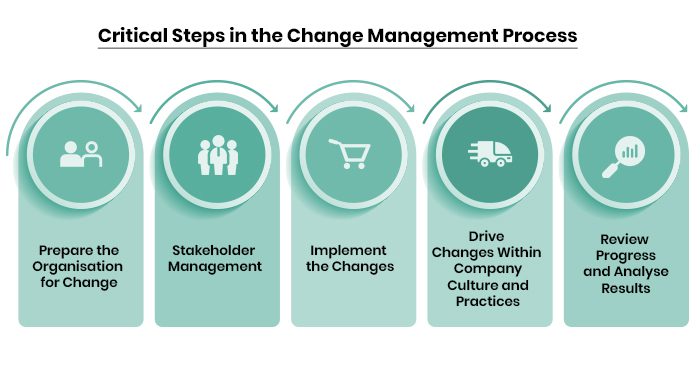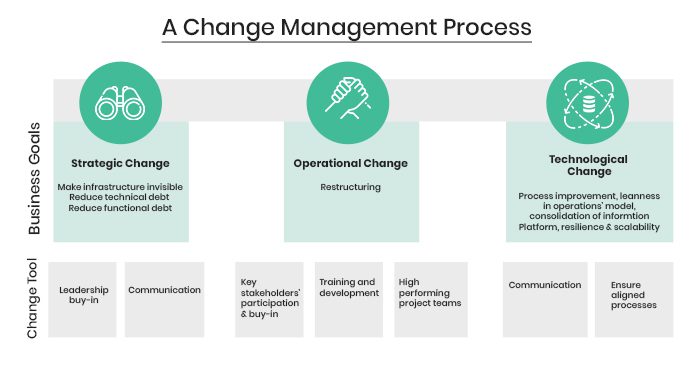A Case for Change
The future of work revolves around constant change. In a recent survey conducted by pcl. to assess the changing dynamics in the world of work, 60% of top executives and key decision-makers indicated changing market dynamics as a key contributing factor in their organisations’ strategy development process and growth assessments.
The insights from the survey highlight influence, effect, and inevitability of change in the global business environment. A practical and existing example of the change effect is Tapal Tea, a Pakistan tea industry market leader.
Tapal Tea, a private and local Asian tea company, became a market leader in the Pakistan Beverage industry in 2015, after over a decade of focusing on changing its mission and strategy, operational structure, and technology
Quick Stats on Tapel Tea
The implemented changes resulted in the company reporting a net sales value of over 34 million dollars (6 billion Pakistani Rupees) in 2005 and crossing Unilever’s Lipton tea’s country-wide sales volume in 2009. In 2013, the private tea company made a net sales value of over 130 million dollars (23 billion Pakistani Rupees), securing its place as a market leader in the Pakistan Tea Industry. In 2020, the organisation recorded a net sales revenue of over 250 million dollars (45 billion Pakistani Rupees), indicating an increase of approximately 90% in 7 years (2013-2020). (Tapal tea financials)
Businesses must constantly grow and adapt to meet various challenges—from technological changes to changes in the competitive environment to a shift in laws, regulations, or underlying economic trends. Failure to do so could lead to stagnation or, worse, loss.
In the case of Tapal Tea, the need for change was realised early and ultimately turned into a competitive advantage.
Managing Change – The Role of Change Management in Strategy Development and Implementation
Every organisation needs to embrace organisational change to stay competitive and grow. However, organisational change can be daunting. It requires vision, and special skills, among other vital elements, to deliver successful results. Overall, it requires effective change management.
Change management is a systematic approach to dealing with the transition or transformation of an organisation’s goals, processes or technologies. Change management aims to implement strategies for effecting change, controlling change, and helping people adapt to change. Such strategies include having a structured procedure for requesting a change and mechanisms for responding to requests and following them up.
1. Prepare the Organisation for Change: Most change occurs to improve a process, a product, or an outcome. It is important to identify the focus and clarify set goals; this involves identifying the resources and individuals that will facilitate the process and lead the change process. Key questions to ask are:
- What do we need to change?
- Why is this change required?
2. Stakeholder Management: The developed vision should be understood by all levels and key stakeholders in the organisation. There must also be shared clarity on how the transformation programme fits into the portfolio of strategic initiatives.
The plan should detail:
- Strategic goals: How the proposed change would help attain the organisation’s goal(s)?
- Clear strategic output and milestones.
- Key performance indicators: This is a clearly stated and identified measure of success.
- Project stakeholders and team (RACI): A clear outline of Responsibilities, Accountable stakeholders who should be Consulted through every process of change and finally, the necessary stakeholder to keep Informed of all activities in the change process.
- Project scope: What distinct steps and actions will the project include? What falls outside of the project scope?
The plan should also account for any possible risks and unknowns that could affect the implementation process and require agility and flexibility to overcome.
3. Implement the Changes: During the implementation process, change managers must empower employees to take the necessary steps to achieve the initiative’s goals. Necessary new skills and behavioural requirements should be well and clearly identified, and all capability gaps should be addressed through appropriate training for individuals.
4. Drive Changes Within Company Culture and Practices: By driving changes within the company’s culture and practices. New organisational structures, controls, and reward systems should be tools to help change stick.
As you promote critical new behaviours, make people aware of how they affect the company’s overall strategic performance.
5. Review Progress and Analyse Results: A structure should be put in place through the change management process to measure the business impact of the changes and ensure that continued reinforcement opportunities exist to build proficiencies. The change management plan should also be evaluated to determine its effectiveness and document any lessons learned.
For instance, the Tapal Groups Change management process included the careful distribution and subdivision of the required change processes and all key stakeholders’ buy-in and technical know-how.
Tapal Tea utilised essential change management tools to ensure effective implementation through every proposed change process.
The Tapal Tea change process included three key areas of change;
- Strategic Change
- Operational Changes
- Technological Change.
Tapal Tea aimed to survive and gain market share in the aforementioned areas. To do this, key organisational decision-makers identified a need to introduce new, modern and contemporary systems to the company.
An effective change management structure must be put in place to implement a proposed change effectively.
The change management process must consider how an adjustment or replacement will impact the organisation’s operations, systems, and employees at the end of an implementation process. All these critical change management processes were evaluated and adapted through Tapal Tea’s transform process, and the result, as earlier stated, the result yielded an evident success for Tapal Tea.
An organisation’s inability to successfully implement critical change management steps in the change management process leads to the following:
- A decline in productivity output
- The reluctance of managers or change champions to be fully committed to the change management process
- Loss of motivation among team members to give their best inputs
- The exit of high-performing employees from your company due to a lack of understanding of your vision
- A division between employees and the administration
Effective change management functions can adjust their role as transformations advance from phase to phase, cultivate proven best-practice traits (including an employee-first approach), and know which parts of their change management organisation to centralise and which parts to distribute.
There will always be someone standing in the way at some point in a transformation process. There will be fewer obstacles to overcome with the correct change management elements.
At pcl. ‘s Strategy and Operations Transformation unit, we support organisations in managing the impact of change and ensuring that the strategy implementation process is set to attain the most optimistic set goal.
We developed the Change wheel, a change management approach based on our over 29 years of on-hand experience implementing change across all sectors within Nigeria. With the aid of this tried and tested approach, we can support your organisation through your strategy implementation or transformation process to assist your organisation in attaining set goals.
Written by:

Wonu Salawu
Senior Analyst


